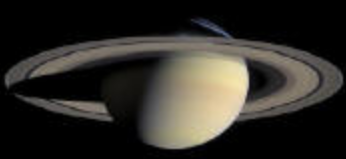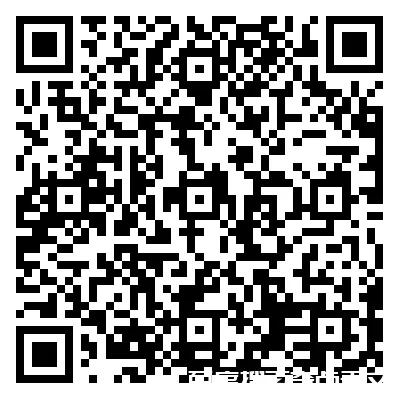
Saturn introduction:
Saturn is the sixth of the eight planets in the solar system, a planet with a beautiful “ring”. Saturn has 9.5 astronomical units (about 1.4 billion kilometers) from the Sun. A more intuitive statement is that the distance between Saturn and the Sun can be used to fill 1,000 Earth diameters. Saturn is the second largest planet in the solar system, second only to Jupiter. Like other wood-like planets, Saturn is almost entirely composed of gas, so it has a very low density and is the lowest density of the eight planets. In addition, Saturn is also one of the wood-like planets.
Among Greek mythology, Saturn represents the god of agriculture, and its English name Saturn is also related to Saturday.
Saturn’s topographical appearance
Saturn is a very special planet with an amazing ring of Saturn, and the appearance of Saturn’s body is like a wooden ball. Because Saturn is mostly composed of gas, coupled with high-speed rotation, it looks like a flat planet. Its equatorial radius and the distance between the poles differ by 10%, which is the most “flat” of the wood-like planets.

Saturn Photograph taken by Cassini on October 6, 2004 (NASA)
Compared to Jupiter, the pattern on the surface of Saturn is not so significant. Of course, because Saturn is made up of gas, there is no way to see the structure of the land from satellite photos.
Saturn’s surface environment
It is impossible to live on Saturn. If you land on Saturn, you will fall into the endless “hydrogen sea”. Saturn’s surface temperature is also quite low, below 150 degrees below zero.
Saturn’s atmospheric movements are very similar to Jupiter. In addition, unlike Jupiter, Saturn’s winds are almost always westerly. There is a very strange pattern in Saturn’s atmosphere, which is a huge hexagon centered on the Arctic. This pattern resembling a starfish surrounds the North Pole at around 76 degrees north latitude and stretches out six straight stripes to gather in the North Pole. At every other time, Saturn’s atmosphere will have a swirling speck pattern, similar to Jupiter. Saturn’s speckled pattern is white, so it is called “great white spot”.

Saturn’s Surface Airflow (NASA) by Cassini
Saturn’s star structure
Saturn’s internal structure is very similar to the core of Jupiter, which consists of rock and ice. The outer layer of the core is surrounded by a layer of liquid metal hydrogen and helium, which accounts for 97% of the total. Saturn also has a powerful magnetic field that is 20 times the Earth’s magnetic field.
In the innermost part of Saturn’s core, the temperature is actually very hot, up to about 10,000 degrees. Its radiant heat is even higher than the heat absorbed by the sun.
Saturn’s planet ring
Saturn’s greatest feature is the majestic Saturn’s ring, the most prominent of the nine planets in the solar system. It is made up of countless tiny particles, most of which are ice. There are gaps everywhere on the ring, and the relatively large gaps are named “Cassini annulus”, “Enke annulus” and so on. These gaps are masterpieces of the Saturn satellite constellation. We know that if a certain celestial body enters the radius of 2.44 times of Saturn’s radius, it will be destroyed by the tidal force of Saturn. This radius is called the “Losch Limit”, but it is only a theoretical idea that small satellites will not be destroyed no matter how close they are. Among the rings, some rings are twisted into strange shapes, and some rings have a spoke-like pattern of bicycles. The shape of such a traditional concept that is enough to overturn the ring should be related to the extremely complex resonance system in Saturn.

Inside Saturn’s ring is a so-called shepherd satellite that maintains the complex structure of Saturn’s ring by the complex gravity of the shepherd’s satellite. The picture on the right is a photograph of Saturn’s ring taken by the Voyager-2 spacecraft in 1981. It can be seen from the photo that there are two small satellites that hold the central ring.
At present (2005), many details about Saturn’s ring are still worthy of in-depth discussion. It is an interesting research topic and one of the scientific purposes of the current Cassini Saturn exploration program.

Shepherd Satellites
Saturn’s satellite
Saturn has more than 35 satellites (2007) and is the second most satellite in the solar system. In addition to the Titans, the proportion of ice is much higher than that of Jupiter’s moons. Saturn’s largest planet is the Titan (radius 2575 km), and the Titan’s atmospheric concentration is 1.5 times that of the Earth (1.5 atmospheres), which is rare in the solar system. A satellite that is less than one-half the size of the Earth can maintain such a dense atmosphere. The main reason is that its environment is very cold. (180 degrees Celsius minus zero), the environment is similar to the original earth, and perhaps the doctrine of the birth of life is in it.

Titan
Saturn observations
A small telescope can see the ring of Saturn, a flat ball with a “hula hoop”. The opening cycle of the ring is about 12 years, and the scene of the disappearance of the Saturn ring appears every once in a while. Saturn’s satellite Titan is only about eight, and barely can see him. Saturn’s brightness is lower than that of Jupiter, but it is very bright compared to other stars and is easy to observe.
HD big picture (click on the picture to see the big picture)



